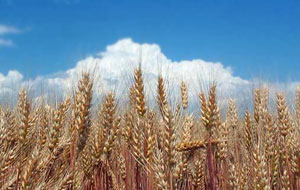Ingham Rebuttal to Attack on Research
The Agribusiness Examiner
Issue #119
June 11, 2001
Engineered bacterium could have serious implication for human life on earth
I have not been "discredited" by any group of my peers, as least as far as anyone in scientific arena has informed me. Further, I have not been subject to any academic censure.
Francis Wevers, in a typically virulent letter using tactics designed to obfuscate the truth, made it sound as if review by my University is a terrible thing. But let me point out that most professors are reviewed each year - it's called an annual review. I believe most people are familiar with the concept. My University reviewed my position, but I was not censured, I have not lost stature at my University.
I reported to the New Zealand Royal Commission on the work that a graduate student performed. That information has been published for a number of years. A clarification was submitted to the Royal Commission basically to point out the incorrect reference for the scientific paper. Typographical errors happen. While regrettable, a typographical error does not change the fact that the scientific data are published and in the scientific record.
I was very clear in my testimony to the Commission that I had been told by individuals in the USEPA that the work done by Dr. Michael Holmes had been repeated. Dr. Michael Holmes, Dr. Lydia Watrud, and Lynn Rogers, a technician at the EPA at the time, also told me that information. Dr. Holmes heard me repeat his information a number of times. I gave that information to the Commission by saying that I understood that the USEPA had repeated the work.
Regardless of whether the EPA did or did not repeat the work, addition of genetically engineered Klebsiella planticola to soil has been shown to result in death of wheat plants in laboratory units. This information, published in Applied Soil Ecology, was the work of Dr. Holmes' Ph.D thesis. It was his work that I spoke about to the Royal Commission.
I was very careful to say that if you extrapolate the results of the laboratory work to the field, based on the facts that most terrestrial plants cannot tolerate alcohol production in the root system, that this bacterium was engineered to produce alcohol, that this bacterium typically grows in the roots systems of all plants, then there is a clear risk if this bacterium were to be released into the natural environment.
This bacterium was being considered for release, and my understanding was that release was mere weeks away when the results of Dr. Holmes' work was given to the EPA.
Dr. Holmes has said that he cannot repeat his Ph.D. research. Why? Because he no longer has the engineered organism in his possession.
Does this suggest that his Ph.D. work was inaccurate or poorly done? Does his inability to repeat the work now suggest his Ph.D. is somehow tainted? Not in any way. If he still had the engineered bacterium, he could repeat the work.
I did not say in my testimony, or at any other time, that release of genetically engineered Klebsiella planticola would end life on earth. That was a fabrication by a newspaper reporter. That this engineered bacterium could have serious implications for human life on earth is something that I would say, however. But it would not end life on earth. After all, the bacterium would survive and happily continue to make alcohol. Other bacteria would happily consume that alcohol, and so on. The web of life could be altered, but would not come to an end.
I do not believe that either George Lawton or Acres have suffered because of the publication of the information about Klebsiella planticola. I think that's probably wishful thinking by people who don't want others to consider the implications of putting something that makes alcohol, using the root's own exudates, into the root systems of alcohol-intolerant terrestrial plants.
Certainly, neither George or any editor from Acres have said anything to me about any negativity. A few rather outrageous blips have appeared that have flamed me, but most people can see through the rhetoric to the facts.
Confused about what is what? Read the scientific paper. Halfway through the abstract, read the line that says: "When SDF20 was added to the soil with plants, the numbers of bacterial and fungal feeding nematodes increased significantly, coinciding with death of the plants." The plants died when the engineered bacterium was added to the soil. The plants did not die when the parent, not-engineered bacterium was added.
Why isn't there a title on the paper that screams "addition of GE bacterium kills plants"? Because it is a scientific paper reporting on a series of experiments, not sensationalistic journalism.
Klebsiella planticola is merely an example that human beings can engineer organisms that can cause serious problems. This engineered bacterium has never been released into the natural environment, and hopefully, never will be.
You want the facts about the potential Klebsiella planticola has? Read the paper. Check the line on page 73, "However, at the end of the experiment, plants in soil inoculated with with SDF20 were chlorotic and wilting, while plants in the uninoculated soil and soil with SDF15 were flowering." SDF20 is the engineered bacterium, and SDF15 is the parent, not-engineered bacterium.
Chlorotic and wilting means the plants had no color, and were, mostly, lying dead on the surface of the soil.
Make your own decision about whether this engineered bacterium is something that could cause significant impacts on terrestrial systems. Ignore the rhetoric, read the facts, decide for yourself.
The paper? Holmes, M.T., E.R. Ingham, J.D. Doyle and C.W. Hendricks. 1999. Effects of Klebsiella planticola SDF20 on soil biota and wheat growth in sandy soil. Applied Soil Ecology 11: 67-78.
Sincerely, Elaine Ingham
President,
Director of Research,
Soil Foodweb Inc.

